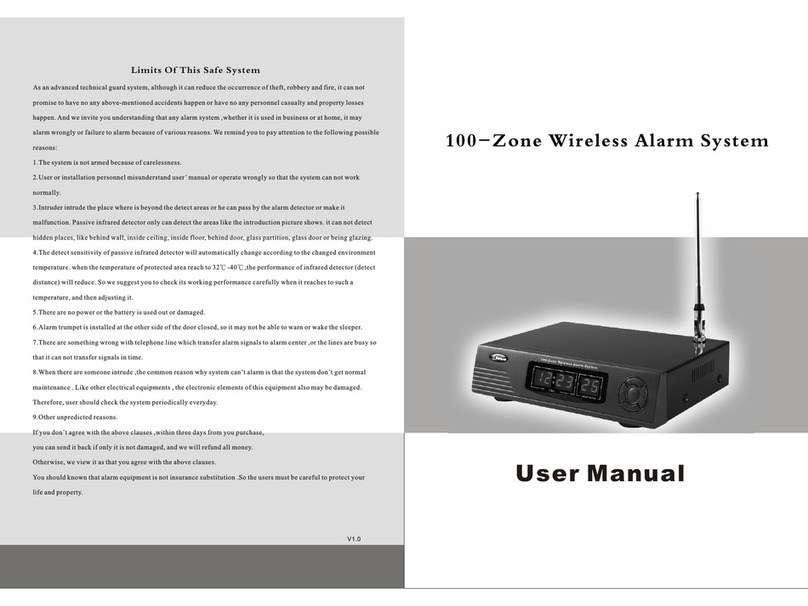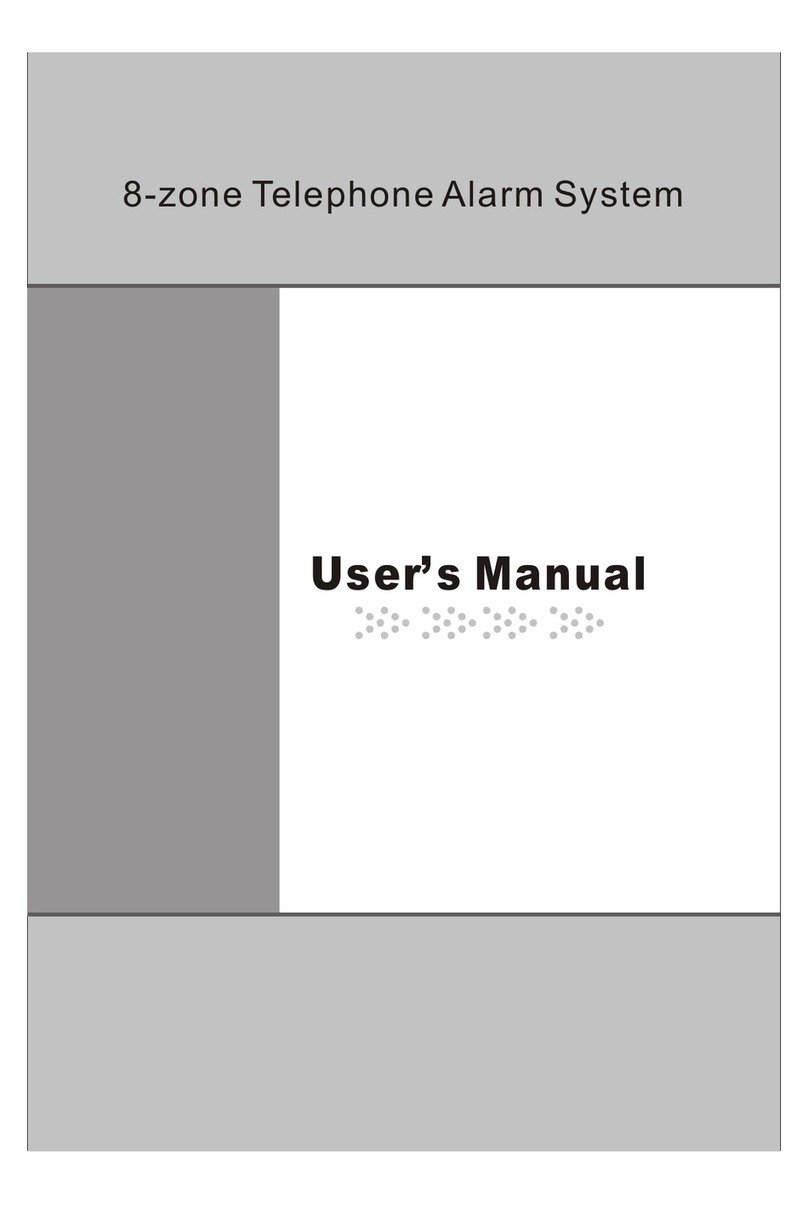
4.2.5 Backup battery connection
To make sure alarm host will work normally in case the AC cut off, the alarm host should be connected
with storage battery as picture 1. Connecting the red line to the anode, and connecting the black line
to the cathode. It will damage the battery if they are connected wrongly, and it uses 12V 7Ah sealed
storage battery. Don't use non-recharged battery or non-sealed storage battery. We suggest
changing the battery every 3 or 5 years.
Note: The alarm host will alarm if the voltage is lower than 10.5V. Moreover, it will indicate if there is
something wrong with program system, and when voltage is lower than 8.5V, it will cut off the power
supply to protect the battery. Don't connect the battery before finishing all lines connection.
4.2.6 Auxiliary connects with power.
SW and C end are interfaces, which can be cut off. It provides equipment, which need to recover the
cut off state after alarming, with +12V/500mA DC. The representative equipment include glass
–broken sensor and smoke detector. AUX and C end are interfaces, which cannot be cut off. It can
provide wired fitting with +12V/500mA DC power. SW & D C end and AUX & C end are protected by
fast thawing fuse (0.75A, 3AG)
4.2.7 Siren outputting connection
Bell&C is the siren-outputting interface. It provides stable 12V DC power when alarming. Fast
thawing fuse F1 (2A, 3AG) protects the interface circuit. When the current over 2A,then the fuse F1
will melt to cut off the connection between alarm host and signal. Note the polarity before connecting.
The anode is connected to the Bell end, and the cathode is connected to the C end as picture1. Note:
if the fuse melts, please cut all alarm host power. After clearing all obstructions, change the fuse, and
then power it on. Don't change it with large capacity fuse.
4.2.8 Program alliance output connection
NC、NO、COM are program alliance outputting interfaces, they can be programmed to control the
switch of some electrical equipment when there are alarms in some zones . NC is normal close end.
And NO is normal open end, COM is common end. Their interfaces can connect with 1A120V AC/24V
DC. If the power of being controlled equipment over interface loads, the current condenser capability
should be enlarged to avoid damaging the board of alarm host.
4.2.9 wired zones connection
Z1-Z8&C have 8 interfaces connecting with line in wired zones. In zone circuit, Z1-Z8 end is anode, C
end is cathode, so when connecting, please pay attention to the polarity of detector alarm output
interface, So as not to damage other parts of apparatus. But it is no need to distinguish the polarities
when fittings are hand-pressing switch or foot-trampling switch.
Every zone circuit can be programmed singly to different circuit types, like “normal close” 、
“normal open” or “line end resistance”. If it is programmed to be “normal close” or “normal open”,
the detector's alarm outputting interface can be connected directly to the both ends of zone circuit; If
it is programmed to be “line end resistance”, the correspondent zone circuit end should be connected
with 2.2KΩ resistance(other zone circuits unused for the moment also should be connected).
Connection principles: normal open detector should be connected in parallel with 2.2K resistances;
normal close detector should be concatenated with 2.2K resistances (and the resistance should be
as near to detector as possible). In order to avoid zone circuit lines damaged (be cut off or short
circuit), you had better program corresponding zone circuit to be “line end resistance”. If both
resistance down-lead and out-line are connected to the same interface. They should be twisted and
screwed firmly, then inserted into the interface, and screw the snail firmly. If resistance down lead is
wire-wrapped and connected with out-lines, it should be soldered after wire-wrapped connection.
Moreover, the parts of resistance down lead should be as short as possible to avoid short circuit by
touching with other metals after twisted.
When the detector need alarm host to provide power, the anode and cathode of the detector's power
input interface should be separately connected with SW and C interfaces or AUX and C interfaces.
-5-






























